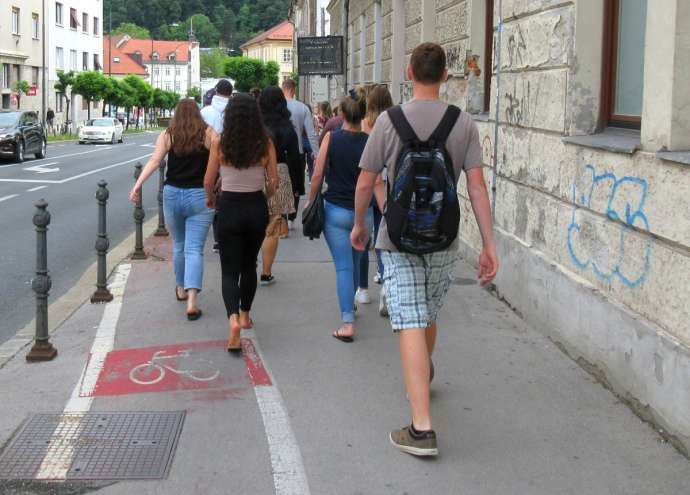STA, 12 August 2019 - Slovenian youths are mostly satisfied with their lives, and they are better educated than their parents. But financially, they still feel the effects of the economic crisis and their position on the labour market is much more precarious, show statistics released ahead of International Youth Day.
There were 309,000 persons in Slovenia aged between 15 and 29 at the beginning of the year, more than half of whom were enrolled in education programmes. Just over 161,000 were employed, the Statistics Office says.
A plurality of young women worked in the services sector and in commerce, while young men were most commonly working in construction, maintenance of buildings, metalworking and similar professions.
Despite having work, youths are in a much more precarious position than older employees. As many as 46% had fixed-term contracts, compared to just 16% for the entire working population.
There were 16,000 unemployed persons in the 15-20 age group, which translates into a 9% unemployment rate, or four percentage points higher than the overall unemployment rate.
The average monthly gross wage for this group amounted to almost EUR 1,300 in 2018, or around three-quarters of the average gross wage for all employees in Slovenia last year.
Among the 309,000 persons in Slovenia aged between 15 and 29, only 5% were neither included in formal education programmes nor were they employed. This puts Slovenia among the most successful countries in this respect.
In the 2018/2019 school year, there were 73,000 secondary school students and 67,000 university students. Another 17,000 persons in this age group were enrolled in adult education programmes, which means that more than half of this age group was attending some form of school.
Last year, the share of persons with tertiary education in the 30-34 age group was 42.7%, up from 24.6% in 2005 and from 34.8% in 2010. The share has been constantly above 40% since 2013, the Statistics Office said.
The at-risk-of-poverty rate for this age group was 11.7%, slightly lower than that for the entire population in Slovenia (13.3%).
This age group is the most satisfied in general with their lives, with their average grade on a one-to-ten scale standing at 8.1 in a recent survey, well above the average of 7.3 for the entire population.
The Statistics Office published the data ahead of International Youth Day, marked on 12 August. It is an awareness day designated by the UN in 1999 in to draw attention to cultural and legal issues faced by youths.
While the UN places emphasis on education for this year's International Youth Day, the Slovenian Youth Council (MSS) has pointed to housing. It has also warned about the growing pessimism among the young regarding their prospects of becoming independent.
The organisation has told the STA that there was a lack of public apartments for young people and that market housing was getting increasingly expensive, even as young people cannot get bank loans.
The council is also critical of what it perceives as centralisation of the country, saying that "not all young people want to live in Ljubljana" and that the state encourages migration from rural areas.
Another challenge is the shortage of jobs for highly educated persons, the MSS said, noting that the current generation of young people will be the first after the Second World War whose quality of life is worse than that of their parents.
Tin Kampl, the head of the government Office for Youth agrees that young people today have more problems than the previous generations. He pointed to problems related to employment, housing and getting independent, which is "something out of reach for a majority of young people".
While noting that young people today had more knowledge and experience and more opportunities to participate in society, Kampl highlighted emigration for work or study which he said left a bitter aftertaste if it is necessity-driven.
According to a survey by the Nefiks institute for the promotion of informal education, as many as 44% of women in Slovenia aged between 20 and 35 sees going abroad as a solution if they fail to get a job in their own country.
The survey has found that only 47% of young women are satisfied with their current standard of living, while 44% are satisfied with their current job. Nefiks has noted that young women in Slovenia are proactive and flexible in job seeking.
With employment of young women connected with family planning, the survey has also shown that 44% of young women who participated in it do not plan a family or do not want to have a family. "Considering that the survey covers women in their fertile age, this is a high percentage," Nefiks said.
All our stories on demographics in Slovenia are here






